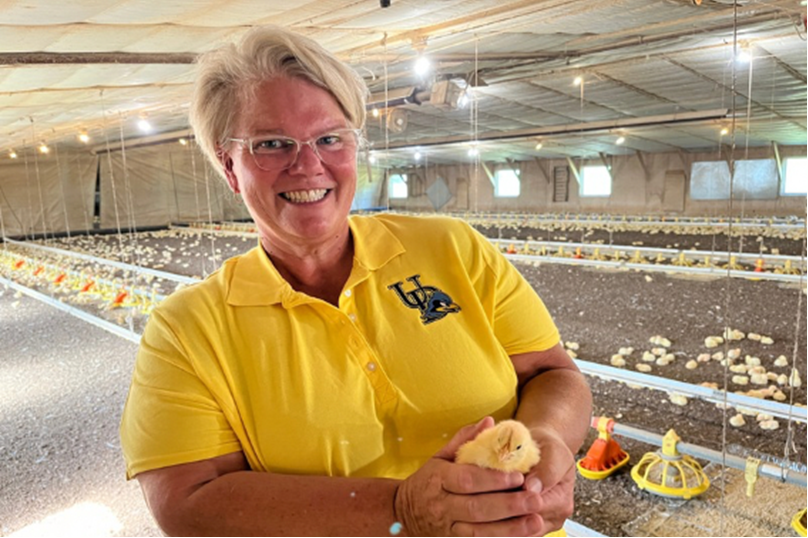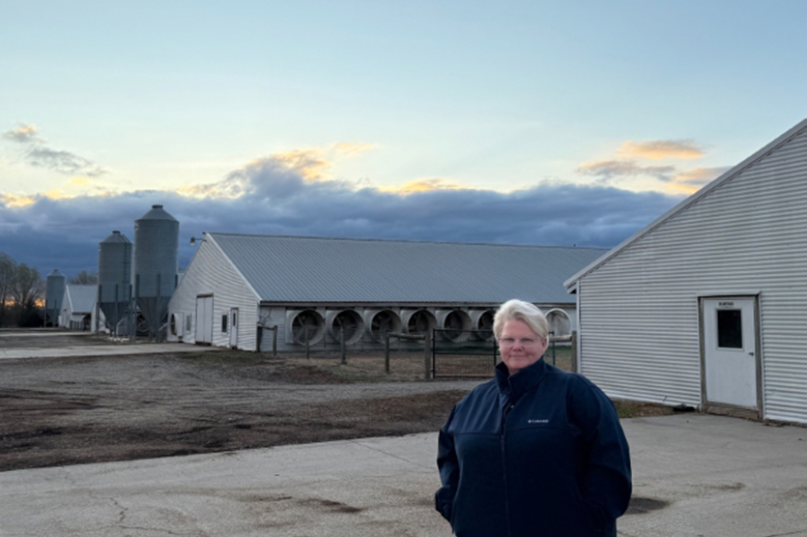Bird Flu Battle Stations
Article by Michele Walfred - Photos by Michele Walfred and Katie Peikes and Courtesy of Georgie Cartanza
March 18, 2025 In late fall, approximately 237,000 wild birds, representing 32 waterfowl species, fly south along the Atlantic Flyway from their Arctic home and settle along the Delmarva Peninsula. The impressive figure, calculated by the University of Delaware from surveys conducted by the Delaware Department of Natural Resources, includes the familiar snow geese, Canada geese and ducks. In all, our temporary avian visitors rest and co-mingle in our local region before returning north at the beginning of spring.
For Georgie Cartanza, the flying V formations migrating overhead are cause for concern. As the

University of Delaware Cooperative Extension poultry extension agent, Cartanza knows the odds are high that the wild birds are carrying avian influenza, which, if spread, is a direct threat to millions of broiler chickens raised on the peninsula - a $5 billion industry.
Highly pathogenic avian influenza (HPAI), or bird flu, is an extremely contagious airborne respiratory virus that spreads quickly among birds through nasal and eye secretions and manure droppings. It’s fatal to commercial poultry.
Cartanza is part of that community, raising organic chickens in four poultry houses. On her family farm in Kent County, she produces 148,000 chickens per single flock, with multiple flocks 5 million pounds of chicken each year.
During winter, Cartanza is constantly reinforcing her all-hands-on-deck approach to biosecurity in person and through her web page.
“One wild bird dropping contains enough virus to infect 1 million birds,” Cartanza warned growers in a fact sheet. “We cannot control where wild birds defecate, but we can take steps to prevent this virus from entering the houses.”
Wild birds were considered asymptomatic carriers until this season when they started dropping from the sky or failed to take off with their flocks. The University of Delaware Allen Lab in Newark tested the ailing and dead geese.
On Dec. 27, the first presumptive positive result of H5N1 avian influenza in sick and dead snow geese were reported in Delaware. The Delaware Department of Agriculture announced the results on Dec. 31 and alerted poultry growers to take precautions.
The announcement was a harbinger of more serious times ahead. On Jan. 3, a test from a poultry farm in Kent County produced a positive result, and a second farm soon followed. As a result, Cartanza reluctantly called for canceling three educational poultry sessions, an opportunity to reach hundreds of family farmers scheduled for January’s annual Delaware Agriculture Week.
The cancellation attracted media attention. Cartanza broadcasted her biosecurity message over the airwaves. Positive tests were increasing.
Cartanza’s instincts were spot on. From January to February, nine commercial poultry farms in Delmarva tested positive for avian influenza. Cartanza’s farm was one of them. Read the full story at: https://www.udel.edu/…/bird-flu-battle-stations-avian…/
